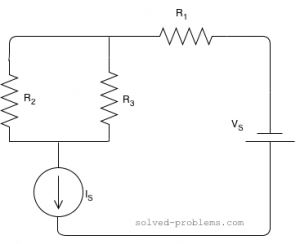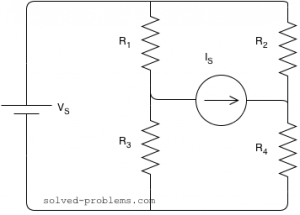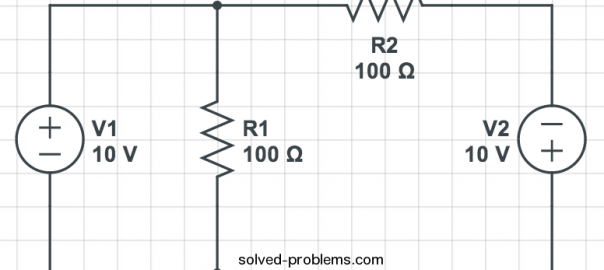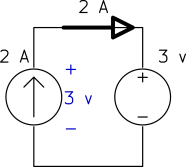A circuit with two sources and three two port elements is studied. Some voltages and currents are given. Voltage of the voltage source is unknown. We need to analyze the circuit, find power of other elements and use the energy conservation to determine the power of the voltage source.
Tag Archives: Independent Sources
Electrical Circuit Contest – Win $10!
What’s up? We are going to have fun! This is our first contest for electrical circuits. Solve the problem, submit your answers and cross your fingers to be the lucky winner! Problem Find and :
Solve Using Current Division Rule
A DC resistive circuit with two sources, one voltage source, one current source both independent solved using current division method.
Mesh Analysis – Supermesh
The mesh analysis used to solve the circuit which has a supermesh. After solving the circuit, power of sources determined.
Find currents using KVL
A simple circuit with two voltage sources and two resistors solved using only KVL.
Thévenin’s Theorem – Circuit with Two Independent Sources
Thévenin’s Theorem is deployed to solve a simple circuit which contains two independent sources. The solution is explained step-by-step.
Ideal Independent Sources
The ideal independent voltage and current sources are explained. Their symbols and voltage-current characteristics are presented. It is shown how their definitions can be used to solve problems. Some examples are also provided to clarify their characteristics.
Problem 1-15: Power of Independent Sources
Determining power of independent voltage and current sources. Passive sign and active sign conventions are used to find out which source is supplyingpower and which one is absorbing.
Problem 1-14: Current of A Voltage Source
Two simple circuits are used to demonstrate the characteristic of voltage and current sources. In both cases, the voltage sources are in series with current sources.
Problem 1-13: Voltage of A Current Source
Five circuits are considered to explain the characteristics of voltage and current sources. It is shown how voltage sources enforce their voltages on parallel elements.






